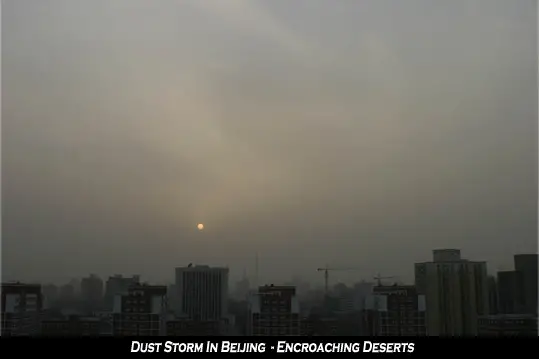The Gobi desert in central China has expanded by about 25,000 square miles since 1994 and its sands are now within 160 kilometres (100 miles) of the capital city, Beijing. The capital gets blasted by about half a million tons of sand every year, often reducing visibility to the point where even its soaring skyscrapers are barely visible, air traffic stops and people are forced to stay indoors.
China is among the countries worst affected by the global problem of desertification. Its 1.3 billion people survive on just one quarter of the worldwide per capita average of arable land and fresh water resources. Despite mass tree-planting campaigns to build a “Green Great Wall”, the sandy areas already smother 27 per cent of China’s landmass, and are expanding by more than 2,460 square kilometres every year.
A recent U.S. Embassy report titled “Desert Mergers and Acquisitions” says satellite images show two deserts in north-central China expanding and merging to form a single, larger desert overlapping Inner Mongolia and Gansu provinces. To the west in Xinjiang Province, two even larger areas – the Taklimakan and Kumtag – are also heading for a merger. Highways there are regularly inundated by sand dunes.

Sadly, the Sahara and Aral Sea are other examples of dry regions undergoing desertification.
